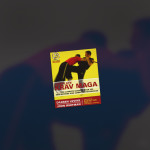Broaden and Widen Your Understanding of the Tools You Already Possess To Succeed, and Make It Stop!
An advanced student of mine made a decent straight stab defense, and as he move into control position against the bigger and stronger attacker, he struggled and tried to muscle his way through the remainder of the defense.
I’m across the room as I see this playing out, and I begin to yell something that approximates, make him stop, make him stop!
I know I’m setting a trap, but the issue is worth calling “Time!” for the class. I begin to ask the defender, “What was the problem?” He replies with the standard excuses, because he’s not able to access the most obvious of answers. If Krav Maga is made for men and women, big and small, short and tall – then there must be a means of stopping the charged-up attacker.
I ask other students, “How do we make the attacker stop?” Answers are called out across the class – break them, smash them, disrupt structure, take their base away, attack the platforms – utilizing new terms recently introduced in class. No. The issue isn’t a technical point. The issue is a simple one.
Sometimes we become so focused on the technical aspects of the defense that we forget this process is not a connect-the-dots exercise. Sometimes, it’s important to do something different than you’ve practiced (and important to practice differently). In this case, because the combative had already been made, the student couldn’t make the leap from “take” back to combative. The principles of Krav Maga don’t always flow in a linear and straight line.
As a result of the conversation, I asked the class to redefine and broaden their personal definitions of what combatives are and what they do. In short, I shared this very important concept – while our goal is to make the attacker stop immediately (perhaps through a knockout), combatives are the “make them stop” solution. When we make good contact with a combative and get the attention of the central nervous system, the attackers attention is divided (resetting the OODA Loop), and in this fraction of a second, we can gain the advantage.
So, I’d like you to think of combatives as a continuum of efforts that might each buy you some time, gain the advantage, and lead you to an outcome where you MAKE IT STOP for good (think knockout). So each time you begin to struggle during a defense, make a good, tactical combative and make it stop.
…walk in peace




